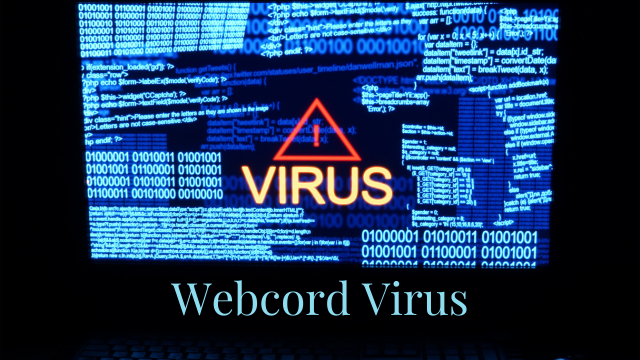As a cybersecurity specialist, I have been keeping a careful eye on the rise of the Webcord virus, a fresh and pervasive threat that has been seriously disrupting the digital environment. With startling effectiveness, this pernicious malware has been spreading quickly, infecting devices and compromising important data.
I hope to clarify the Webcord virus, its effects, and the precautions you may take to protect your digital life from its clutches in this extensive post. By comprehending the nature of this threat and taking preventative action, we can equip ourselves to confidently traverse the always changing cybersecurity landscape.
Understanding the Impact of the Webcord Virus
A highly skilled malware strain, the Webcord infection is made to break into computers and cause widespread destruction. It has become a strong opponent in the digital sphere due to its ability to propagate quickly through a variety of vectors, steal confidential information, and interfere with vital systems.
The possibility for the Webcord virus to corrupt financial and personal information, leaving people open to identity theft, fraud, and other types of cybercrime, is one of the infection’s most worrisome features. The virus has also been known to target companies and organizations, impairing operations and seriously harming their reputations and finances.
Signs and Symptoms
It’s critical to identify the telltale signs and symptoms of a Webcord virus infection in order to quickly identify and contain the threat. The following are some typical signs that your device might be infected:
- Unexpected and sudden system failures or slowdowns
- strange pop-up ads or URL redirects to dubious websites
- unauthorized alteration of the homepage or browser settings
- Having trouble using specific web services or apps
- Unexpected file deletions or loss of data
It’s critical to act right away to address the problem and stop additional damage if you see any of these symptoms.
How Does the Webcord Virus Spread?
The Webcord virus poses a serious concern because of its amazing capacity to spread across a variety of avenues. Among the principal means of transmission are:
- Contaminated links or attachments in emails
- Website compromises and online adverts
- Taking advantage of holes in operating systems or software
- USB devices or other portable media that are infected
- Techniques of social engineering, such phishing schemes
Comprehending these infection vectors is essential for formulating effective ways to reduce the likelihood of contracting the Webcord virus.
Protecting Your Digital World from the Virus
Protecting your digital environment from the Webcord virus necessitates a multifaceted strategy that includes proactive monitoring, preventive measures, and response activities. Consider the following best practices:
Best Practices for Preventing Webcord Virus Infections
- Keep your software and operating systems up to date with the latest security patches and updates.
- Use a reputable antivirus or anti-malware solution and ensure it is regularly updated.
- Be cautious of email attachments, links, and downloads, especially from unfamiliar sources.
- Implement strong password policies and enable two-factor authentication wherever possible.
- Regularly back up your important data to secure, offline storage.
Tools and Software for Detecting and Removing the Webcord Virus
- Utilize reliable antivirus or anti-malware software with real-time scanning and removal capabilities.
- Employ a comprehensive security suite that offers protection against a wide range of cyber threats.
- Consider using a malware removal tool specifically designed to detect and eliminate the Webcord virus.
- Utilize browser extensions or plugins that can block suspicious websites and online activities.
What to Do If You’re Infected with the Webcord Virus
- Disconnect the infected device from the internet to prevent the virus from spreading.
- Run a full system scan with your antivirus or anti-malware software to identify and remove the Webcord virus.
- If the virus persists, consider performing a clean reinstallation of your operating system to ensure a thorough removal.
- Change all your passwords, especially for sensitive accounts, and monitor your financial and personal information for any signs of compromise.
- Seek professional assistance from a cybersecurity expert if you are unable to resolve the issue on your own.
The Future of Cybersecurity in the Age of the Webcord Virus
The capacity of cybersecurity to remain ahead of these new threats will surely shape the field as the Webcord virus continues to change and adapt. Technological developments in blockchain, AI, and machine learning could improve our defenses against advanced malware such as the Webcord infection.
Furthermore, it is crucial to promote a culture of cybersecurity education and awareness. By endowing individuals and institutions with the ability to adopt a proactive stance towards digital safety, we can jointly fortify our resistance against the Webcord virus and other nascent cyber hazards.Get the most recent information on the Webcord malware and other cybersecurity risks by subscribing to our newsletter. This will keep you informed and safe. Together, we can confidently and safely traverse the digital terrain.
Conclusion
The Webcord virus is a dangerous foe that requires all of our focus and caution. Strongening our digital defenses and shielding our personal and professional life from the disastrous effects of this virus can be achieved by comprehending its impact, identifying the warning indications of infection, and putting strong preventive measures in place.
It is critical that we continue to be proactive, flexible, and dedicated to staying ahead of the curve as the cybersecurity landscape changes. We can make sure that, even in the face of the Webcord virus and other rising cyber dangers, our digital environment is safe and secure sanctuary by embracing a culture of cybersecurity awareness and utilizing the newest tools and technologies.












